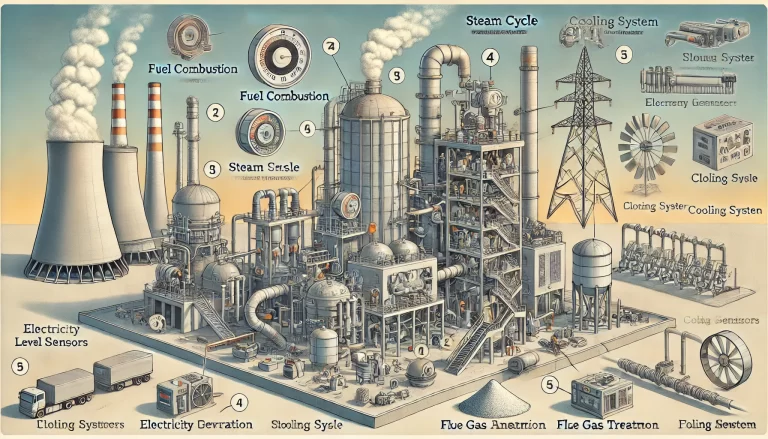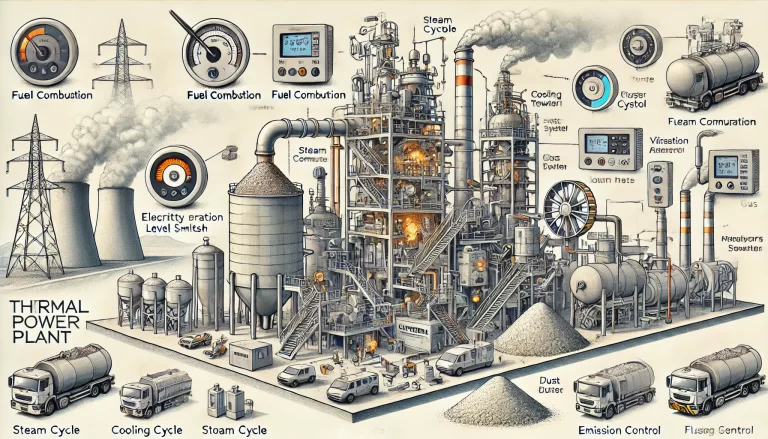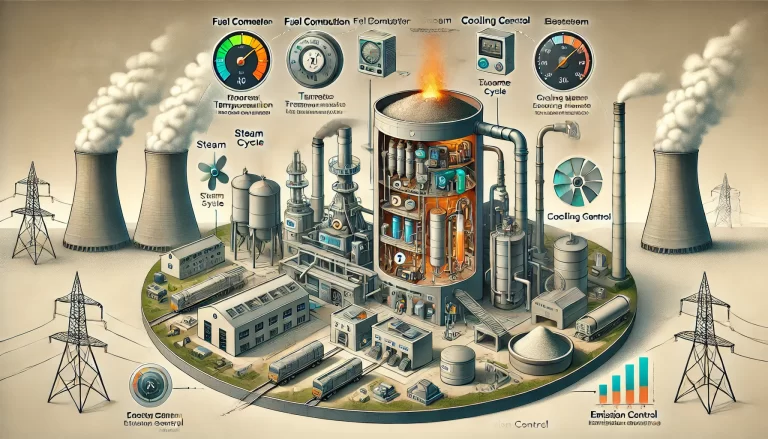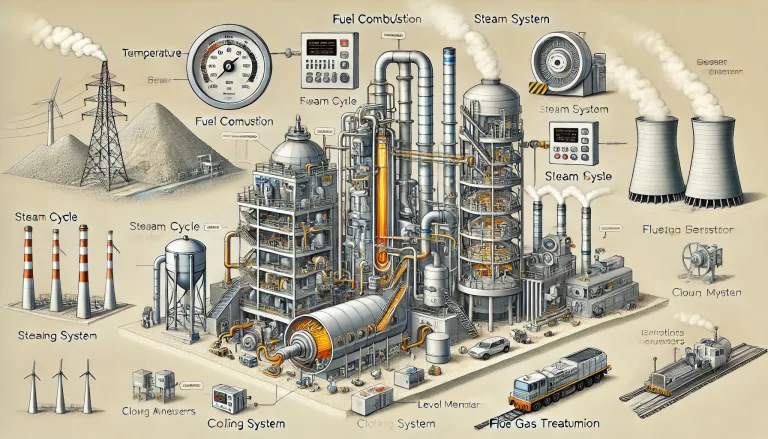Thermal power plants convert chemical energy into electrical energy through complex thermodynamic processes involving numerous mechanical and chemical reactions. To ensure the efficient, safe, and stable operation of power generation, thermal power plants must be equipped with a comprehensive range of process instruments. These instruments monitor, control, and adjust system parameters to ensure the normal operation of boilers, turbines, generators, and auxiliary equipment. This article provides a detailed overview of the primary process instruments used in various operational stages of thermal power plants and their specific applications, with a focus on the vibrating rod level switch used in limestone silos.
1. Vibrating Rod Level Switches in Limestone Silos
In thermal power plants, vibrating rod level switches are commonly used to monitor the material level in limestone silos. These switches help manage material storage and transport, preventing failures due to empty or overfilled silos.
Applications:
Widely used in limestone and fly ash silos to monitor powdery or granular materials.
Function:
When the material level reaches the set point, the vibrating rod switch detects the presence of material through vibration principles and triggers a signal to the control system, which then manages the replenishment or transportation of materials.
Advantages:
Easy installation, sensitive response, and suitability for powdery and granular materials, making it an essential tool for silo management.

2. Key Operational Stages in Thermal Power Plants
The basic operational process of a thermal power plant generally includes the following stages:
Fuel Combustion: Fuel (such as coal, natural gas, or oil) is burned in the boiler to produce high-temperature, high-pressure steam.
Steam Cycle: Steam enters the turbine through pipelines, driving the turbine to generate power.
Electricity Generation: The turbine drives the generator to convert mechanical energy into electrical energy.
Cooling and Water Circulation: The cooling system condenses the steam and returns it to the boiler for reheating.
Flue Gas Treatment and Emission: Flue gases produced during combustion are treated through desulfurization, denitrification, and dust removal before being released.
3. Key Process Instruments and Their Applications
3.1 Boiler Process Instruments
The boiler is the core equipment of a thermal power plant, where precise monitoring of combustion, steam generation, and fuel-air mixture is crucial. Key process instruments include:
Temperature Sensors:
Applications: Monitoring temperatures at various boiler locations, such as the furnace, superheater, reheater, and boiler outlet.
Function: Ensures that temperatures remain within safe limits to optimize combustion efficiency and steam generation.
Types: Common types include thermocouples and resistance temperature detectors (RTDs).
Pressure Sensors:
Applications: Monitor steam and furnace pressure to prevent unsafe conditions.
Function: Detects abnormal pressure conditions to avoid boiler explosions or inefficiencies.
Types: Diaphragm pressure sensors and differential pressure sensors.
Flow Meters:
Applications: Measure the flow of feedwater, fuel, and air supply.
Function: Ensure optimal flow rates to maintain boiler efficiency.
Types: Vortex flow meters, electromagnetic flow meters.
Oxygen Analyzers:
Applications: Monitor the oxygen content in flue gases.
Function: Optimize combustion by adjusting the fuel-air ratio.
Types: Electrochemical sensors and laser analyzers.

3.2 Turbine System Process Instruments
Turbines convert steam energy into mechanical energy, driving the generator. Essential process instruments include:
Vibration Sensors:
Applications: Monitor turbine vibration levels to detect mechanical failures.
Function: Prevent excessive vibration that may damage the turbine.
Types: Accelerometers and velocity sensors.
Pressure Sensors:
Applications: Monitor steam pressure at turbine entry and exit points.
Function: Ensure optimal operating conditions to prevent efficiency losses.
Temperature Sensors:
Applications: Measure steam temperatures at turbine inlet and outlet.
Function: Ensure the turbine operates within design temperature limits.
Flow Meters:
Applications: Monitor steam flow to maintain stable operation.
Function: Prevent overloading or underutilization of the turbine.
3.3 Generator System Process Instruments
Generators convert mechanical energy into electrical energy. Key instruments include:
Current/Voltage Sensors:
Applications: Monitor output current and voltage levels.
Function: Ensure stable power generation and load adjustment.
Frequency Sensors:
Applications: Track generator output frequency.
Function: Maintain grid stability and avoid power fluctuations.

3.4 Cooling System Process Instruments
The cooling system is essential for condensing steam and maintaining operational efficiency. Key instruments include:
Temperature Sensors:
Applications: Monitor cooling water temperature.
Function: Prevent overheating and ensure efficient heat dissipation.
Flow Meters:
Applications: Measure cooling water flow.
Function: Ensure sufficient flow for effective cooling.
Pressure Sensors:
Applications: Monitor water pressure in the cooling system.
Function: Ensure stable circulation to prevent cooling failure.

3.5 Flue Gas Treatment Process Instruments
Flue gas treatment systems minimize environmental impact by reducing emissions. Common instruments include:
Gas Analyzers:
Applications: Analyze flue gas components such as SO2, NOx, and CO2.
Function: Ensure compliance with environmental regulations.
Dust Monitors:
Applications: Measure particulate matter concentration in emissions.
Function: Ensure emission levels comply with environmental standards.
Conclusion
Process instruments are critical to the efficient and safe operation of thermal power plants. Their precise monitoring capabilities help optimize energy production, reduce environmental impact, and prevent potential hazards. By integrating advanced instrumentation technology, power plants can achieve greater operational efficiency and sustainability.
